Camino de Santiago
Camino Francés
Chemin Le Puy
Portugal Camino (Coastal)
Portugal Camino (Central)

El Camino de Santiago, also known as the Way of St. James and Chemin de Saint-Jacques-de-Compostelle is one of the most important Christian pilgrimages in the world, third only to Rome and Jerusalem. Legend holds that St. James’s remains were carried by boat from Jerusalem to northern Spain where he was buried on the site of what is now the city of Santiago de Compostela. Hundreds of thousands of people each year make the pilgrimage to Santiago following countless routes throughout Europe. At the height of its popularity in the 11th and 12th centuries, over half a million people per year were said to have made the trek to Santiago. Millions of pilgrims have traveled to Santiago for over a thousand years now.
Technically speaking, the “Camino” is any route that takes you to the cathedral in Santiago. There are Camino routes throughout all of Europe including Portugal, Switzerland, Austria, Germany, Italy, the Netherlands and so on. Many are marked trails, many others are not. I hiked two of the most popular named routes: the Camino Francés and the Vía Podensis. The latter I call the Chemin Le Puy because absolutely nobody I ever met ever called it the Vía Podensis. (Most often, I’d just refer to it as the “Le Puy Route,” but since it’s located entirely in France, I liked using the word chemin for this website, which is a French word for path or way.)
I first heard about the Camino from Fozzie (a.k.a. Keith Foskett)—a thru-hiker I met on the Pacific Crest Trail. He’d written a book about his adventures on the Camino called The Journey In Between—and after I finished my PCT hike, I read his book and thought, “This! This is the trail I need to hike next!” It had adventure written all over it!
I started my own pilgrimage in Le Puy-en-Velay, deep in France, on August 12, 2012, and reached Santiago nearly two months later on October 8th. My journey, however, carried me on towards the Atlantic Ocean, where it finally ended on October 15th in Fisterra. I wrote a poorly-edited, daily blog of my adventures at Another Long Walk. This trail’s adventures begins in August of 2012.
These routes are largely urban routes, following old roads through several towns each day. Being a pilgrimage route, you’ll find many churches, chapels, shrines, crosses and other religious artifacts along the trail, and you’ll see plenty of examples of those in the photos from these routes. You’ll also pass through a lot of farmland—sunflowers, tobacco, wheat, barley, melons, cattle, sheep and more.
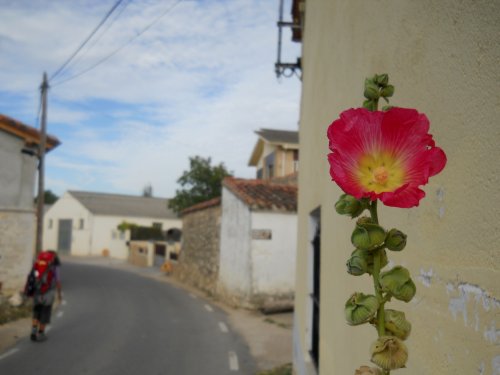
Flower in Orbaneja
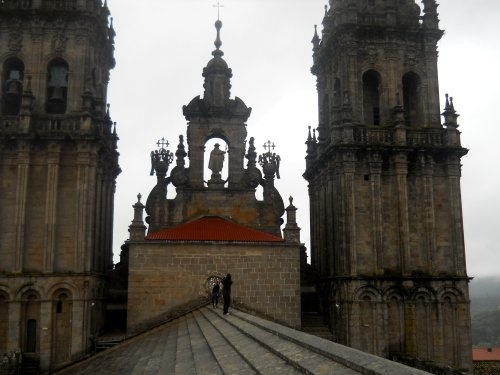
The Santiago Cathedral Roof Tour
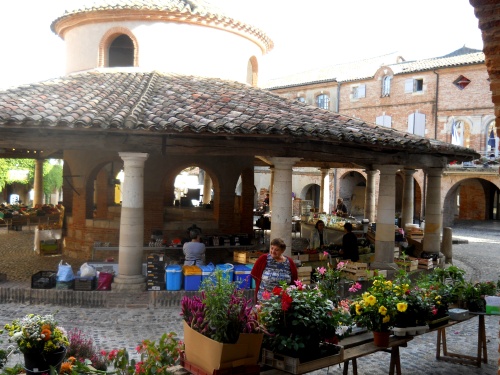
Downtown Auvillar
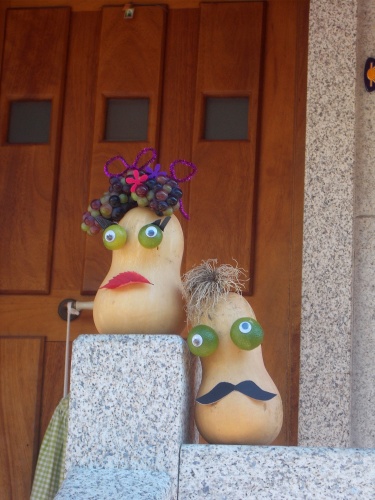
Fun with food!
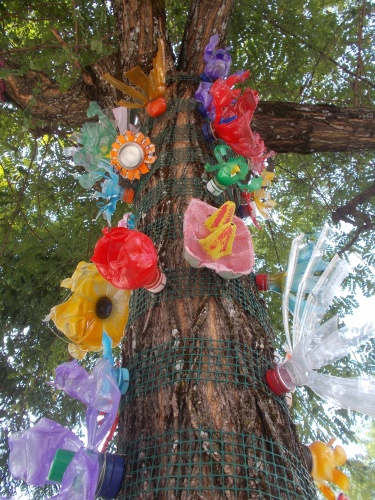
Plastic bottle decorations
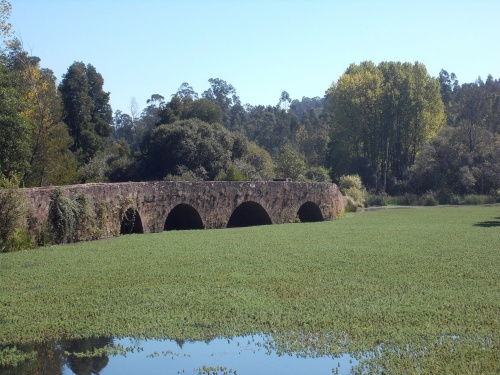
Marnel River
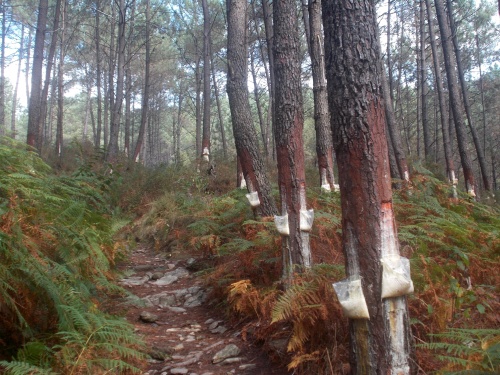
Harvesting sap
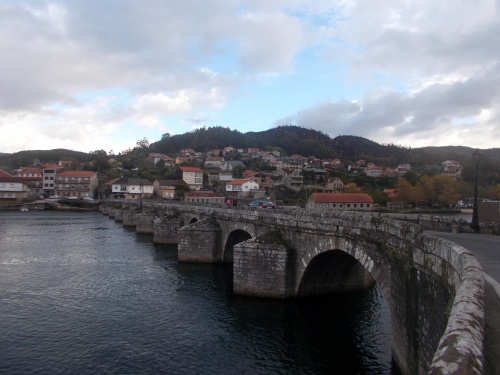
Ponte Sampaio over the Verdugo River



